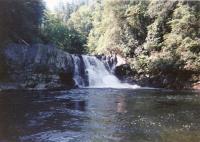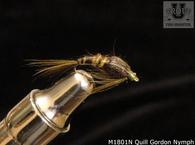
Some of you may be traveling to Townsend Tenn, for the Troutfest 2011 to be held on May 14. If so, you may want to fish some of the great streams that exist in the Park. Here is a snap shot of some of the hatches that will be occurring in the GSMNP during your stay in the Smokies. I will be there helping my good friend James Marsh the creator of Perfect Flies.
Some of the current hatches are as follows:
Blue Winged Olive (a stand by)
American March Brown
Light Cahill
Little sister Caddis
Cinnamon Caddis
Yellow Sally (Little Yellow Stoneflies)
Giant Black Stoneflies (Salmonflies)
Briefly, a little something about the hatches.
The species of Salmonflies that live in the park are all a dark color and are referred to as the Giant Black Stonefly. They are one of the largest of the insects that make up the trout’s diet in the park. They are primarily nocturnal in nature and remain mostly under the rocks during the day. Fishing them as a nymph presents the best opportunity to catch trout.
There are two different families of stoneflies that are often called Yellow Sallies in the park. There are some species of these two families of Little Yellow Stoneflies hatching from the first of March until September. They are one of the most important insects in the GSMNP and provide the trout some excellent food in the nymph stage. The nymphs are far more popular with the trout than the adults.
The American March Brown is sometimes referred to as the “Gray Fox” and is one of the most plentiful of the large Mayflies that are found in the GSMNP. The nymphs act like crayfish in that they stay down between and underneath the rocks on the bottom of the stream for most of their one-year lifetime. They remain in the fast water moving to the slower adjacent water to hatch.
The Little Sister Caddisflies hatch from the first of May thru the end of July. They are net spinners and are plentiful in rich waters like Abrams Creek. All three stages of them can be fished but they are a little more difficult to fish than the Cinnamon Caddis due to their relatively small size.
The Cinnamon Caddis make up the greater portion of the Caddisflies that exist in the park. They like the rich waters non acidic waters of Abrams Creek. They are net spinning Caddisflies and get their food from the algae the exists in the water and that algre is why Abrams is so slippery. On one occasion, I was so frustrated with the slippery rocks that I crawled to the edge of the water!
The Light Cahill is a Mayfly that hatches from the last week in April until the end of June and can be found in many of the smaller brook trout streams. The nymphs are clingers and they live down between and under the rocks on the bottom of the fast water runs and riffles. These nymphs require lots of oxygen and are not found in the slower moving water.





